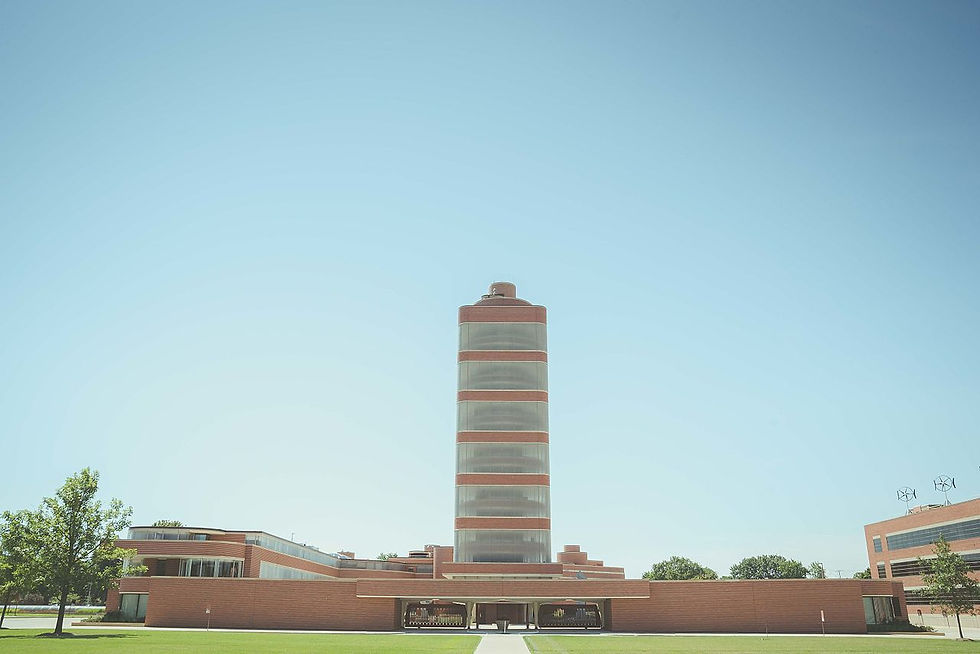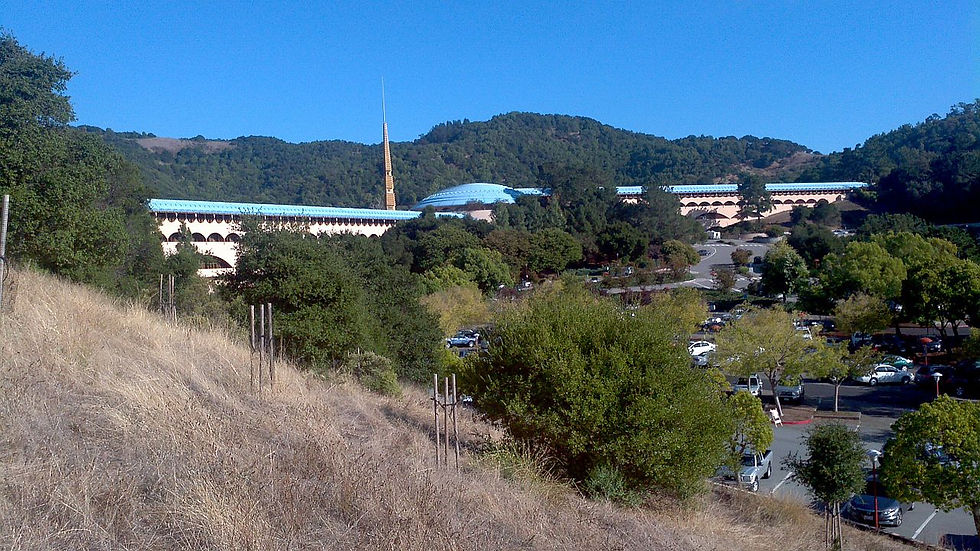Frank Lloyd Wright
- Ayush Mishra
- Dec 16, 2022
- 2 min read

A Brief Overview
Frank Lloyd Wright was an American architect, interior designer, writer, and educator who is considered one of the most influential architects of the 20th century. Wright was born in 1867 and began his career in the late 1800s, working in the offices of several notable architects in Chicago. He later established his own architecture firm, which became known for its innovative and forward-thinking designs.
Wright is best known for his work in the Prairie School style, which he developed in the early 20th century. This style is characterized by its emphasis on horizontal lines, low-slung roofs, and an integration with the natural surroundings. Wright's buildings often feature open floor plans, an emphasis on natural light, and a connection to the outdoors.
Some of Wright's most famous projects include the Robie House in Chicago, the Fallingwater House in Pennsylvania, and the Solomon R. Guggenheim Museum in New York City. Wright's work has had a lasting impact on the field of architecture and has inspired generations of architects and designers. He received numerous awards and accolades throughout his career and is considered one of the greatest architects in history.
Architectural Style:
Wright's buildings often feature open floor plans, an emphasis on natural light, and a connection to the outdoors. He believed in designing buildings that were in harmony with their surroundings and incorporated elements of the local landscape and culture into his designs.

In addition to the Prairie School style, Wright also developed the concept of "organic architecture," which emphasizes the integration of the building with its natural surroundings. This approach involves designing buildings that are in harmony with their environment and that feel as if they are a natural part of the landscape.
Wright's architectural style is characterized by its simplicity, functionality, and a strong connection to nature. He believed in designing buildings that were both aesthetically pleasing and practical, and his work has had a lasting influence on the field of architecture.


Most influential Projects by Frank Gehry:
Price Tower
The Price Tower is a nineteen-story, 221-foot-high tower at 510 South Dewey Avenue in Bartlesville, Oklahoma. It was built in 1956 to a design by Frank Lloyd Wright. It is the only realized skyscraper by Wright, and is one of only two vertically oriented Wright structures extant (the other is the S.C. Johnson Wax Research Tower in Racine, Wisconsin).

The Price Tower was commissioned by Harold C. Price of the H. C. Price Company, a local oil pipeline and chemical firm. It opened to the public in February 1956.
Fallingwater
Fallingwater is a house designed by the architect Frank Lloyd Wright in 1935 in the Laurel Highlands of southwest Pennsylvania, about 70 miles (110 km) southeast of Pittsburgh. It is built partly over a waterfall on Bear Run in the Mill Run section of Stewart Township, Fayette County, Pennsylvania. The house was designed to serve as a weekend retreat for Liliane and Edgar J. Kaufmann, the owner of Pittsburgh's Kaufmann's Department Store.
After its completion, Time called Fallingwater Wright's "most beautiful job" and it is listed among Smithsonian's "Life List of 28 Places to See Before You Die".The house was designated a National Historic Landmark on May 11th, 1976. In 1991, members of the American Institute of Architects named Fallingwater the "best all-time work of American architecture" and in 2007, it was ranked 29th on the list of America's Favorite Architecture according to the AIA.
The house and seven other Wright constructions were inscribed as a World Heritage Site under the title, "The 20th-Century Architecture of Frank Lloyd Wright", in 2019.

Solomon R. Guggenheim Museum
The Solomon R. Guggenheim Museum, often referred to as The Guggenheim, is an art museum at 1071 Fifth Avenue on the corner of East 89th Street on the Upper East Side of Manhattan in New York City. It is the permanent home of a continuously expanding collection of Impressionist, Post-Impressionist, early Modern, and contemporary art and also features special exhibitions throughout the year. The museum was established by the Solomon R. Guggenheim Foundation in 1939 as the Museum of Non-Objective Painting, under the guidance of its first director, Hilla von Rebay. The museum adopted its current name in 1952, three years after the death of its founder Solomon R. Guggenheim.

The museum's building, a landmark work of 20th-century architecture designed by Frank Lloyd Wright, drew controversy for the unusual shape of its display spaces and took 15 years to design and build; it was completed in 1959. It consists of a six-story, bowl-shaped main gallery to the south, a four-story "monitor" to the north, and a ten-story annex to the northeast.
The main gallery contains a six-story helical ramp that extends along its perimeter, as well as a central ceiling skylight. The Thannhauser Collection is housed within the top three stories of the monitor, and there are additional galleries in the annex and a learning center in the basement. The building underwent expansion and extensive renovations from 1990 to 1992, when the annex was built, and it was renovated again from 2005 to 2008.
The museum's collection has grown over the decades and is founded upon several important private collections, beginning with that of Solomon R. Guggenheim. The collection, which includes around 8,000 works as of 2022, is shared with sister museums in the Spanish city of Bilbao and elsewhere. In 2013, nearly 1.2 million people visited the museum, and it hosted the most popular exhibition in New York City.
Johnson Wax Headquarters
Johnson Wax Headquarters is the world headquarters and administration building of S. C. Johnson & Son in Racine, Wisconsin. Designed by AmericanarchitectFrank Lloyd Wright for the company's president, Herbert F. "Hib" Johnson, the building was constructed from 1936 to 1939. Its distinctive "lily pad" columns and other innovations revived Wright's career at a point when he was losing influence.

Also known as the Johnson Wax Administration Building, it and the nearby 14-story Johnson Wax Research Tower (built 1944–1950) were designated as a National Historic Landmark in 1976 as Administration Building and Research Tower, S.C. Johnson and Son.

Marin County Civic Center
The Marin County Civic Center, designed by Frank Lloyd Wright, is located in San Rafael, California, United States. Groundbreaking for the Civic Center Administration Building took place in 1960, after Wright's death and under the watch of Wright's protégé, Aaron Green; it was completed in 1962. The Hall of Justice was begun in 1966 and completed in 1969. Veterans Memorial Auditorium opened in 1971, and the Exhibit Hall opened in 1976.

Located away from the former county seat in downtown San Rafael, the expansive complex stretches across two valleys just east of US Its pink stucco walls, blue roof and scalloped balconies are distinctive. The smaller wing is the county administration building and the larger the Hall of Justice, joined by a round structure on a small hill that houses a county library.

A battle between factions of the Marin County Board of Supervisors played out through the selection of the site and the architect, the financing of the project, and its eventual completion. The Marin County Civic Center is a state and National Historic Landmark.
The nearby fairgrounds hosts the Marin Sonoma Concours d’Elegance each spring and the Marin County Fair in July.




Comments